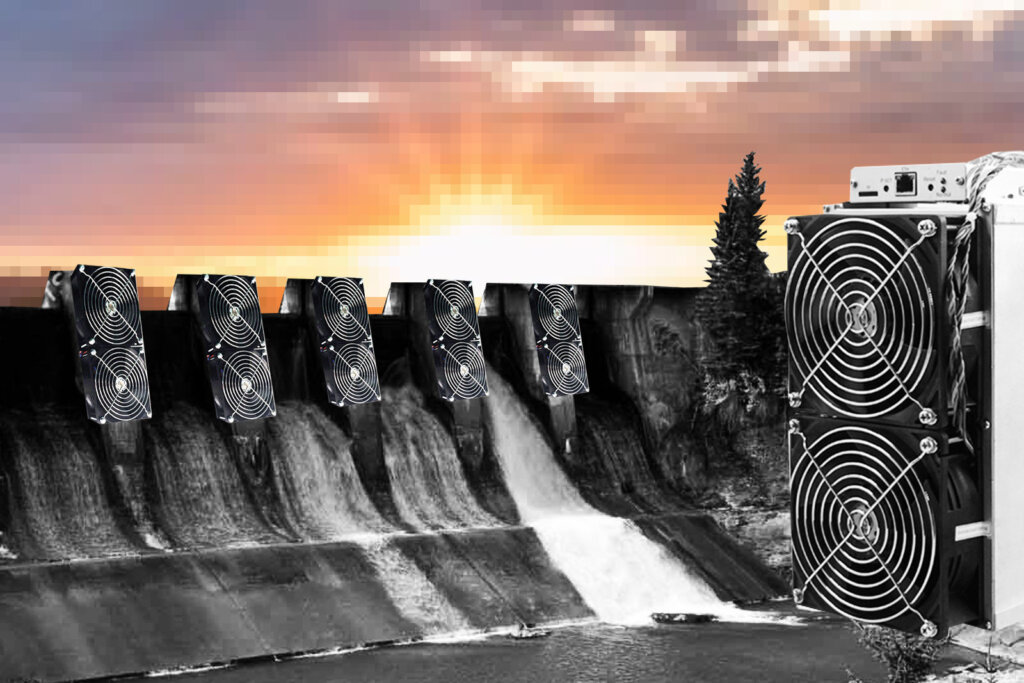- The hydroelectric plant is selling power to local miners, but there is a potential market for foreign clients looking for cheap, clean power and a stable internet connection.
- The costs of mining Bitcoin are very attractive to local miners and foreign companies, but the government has preferred to go slowly, although it has not interfered in mining activities.
Hundreds of equipment used in Bitcoin mining are fed with the energy generated by a hydroelectric plant moved by a small river located in the middle of the forest with coffee and sugar cane plantations in the Central American country.
Because the government stopped buying electricity from the hydroelectric plant during the pandemic crisis, as there was a surplus of energy, its administrators had to rethink the business.
That was when the idea of selling hydroelectric power to Bitcoin miners operating in the country came up. Some 650 machines owned by 150 miners are now operating night and day. The equipment is housed in eight containers that the plant supplies with energy.
Opening of the first Digital Mining Center
Data Center CR inaugurated this first Digital Mining Center in the country, located at the Poás I Hydroelectric Plant (San Pedro de Poás), in April of last year. The hydroelectric plant is located right next to the Poás River, a small source of water located 35 kilometers (22 miles) from the capital, San José.
Costa Rica has been generating most of the energy it consumes for several years from green sources.
"We had to pause the activity for nine months, and exactly a year ago I heard about Bitcoin, blockchain and digital mining,"
explained Eduardo Kooper, the president of Data Center CR, owner of the plant and the farm of about 60 hectares.
"At first I was very skeptical, but we saw that this business consumes a lot of energy and we have a surplus,"
added the executive of the family business.
The hydroelectric plant has three plants with a generation capacity of three megawatts and a value of US $ 13.5 million. To adapt the plant for the digital mining business, the company invested US $ 500,000.
The government has lacked momentum
According to Kooper, cryptocurrency miners from abroad could set up their farms in the country, as they are looking for cheap and clean energy and a stable Internet connection. Costa Rica has enough energy and the necessary technological infrastructure.
Despite these privileged conditions compared to other countries in the region, the government has not been aggressive enough to attract more miners to the business, says Kooper, without offering further details.
The government has not offered any comment on this point. Congress has also not approved a specific regulation for Bitcoin and other cryptocurrencies. The Central Bank of Costa Rica has preferred not to stifle mining activity and cryptocurrency trading with regulations, but rather to let it develop.
"We are working on an innovation hub, which will be a kind of information center and informal conversation between industry operators, startups, people who are promoting new ideas about Fintech,"
announced last October the president of the issuing institute Rodrigo Cubero Brealey.
The idea is to sound out opinions
"about which regulatory aspects could be and, also, it can be a forum where the authorities can envision smart regulation options,"
said Cubero.
On The Flipside
- Although the government has been tolerant of cryptocurrency trading and mining and supports technological innovation, it has acted with caution before moving forward in creating a regulatory legal framework.
- Unlike its neighbor El Salvador, which approved the BTC as legal tender, the Costa Rican authorities consider that it is not convenient to use it as a unit of account for the payment of taxes and the purchase – sale of goods and services.
Why You Should Care
- The miners that have settled in the Digital Mining Center are all local, but there is potential to attract investment from foreign mining companies.
According to Mauricio Rodríguez, a young computer security engineer, who entered digital mining last year, this center offers many advantages.
"Installing it in this place is much more profitable than at home,"
he said. He estimates that his costs have been cut by almost half, after he connected his equipment to the grid that feeds the hydroelectric plant.










